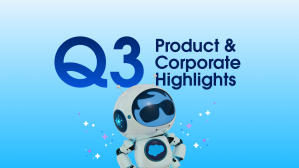At Salesforce, ensuring our infrastructure and applications are always available for customers is top priority. Over the last few years as our product portfolio has grown and become more complex, we have invested in multiple areas to ensure maximum resiliency including a pipeline hardening process through which we closely track all changes from concept to development to deployment, an increased focus on change management, revamping our problem management process, site switching for maintenance and compliance, as well as incident management and tooling improvements.
And, to ensure full transparency, anyone can always visit trust.salesforce.com to get the latest details on service availability and performance for Salesforce products.
To ensure we stay focused on the availability and resiliency of our platform, we recently created the position of Chief Availability Officer, and hired our very own Darryn Dieken for the job.
We caught up with Darryn to hear more about what this new job entails.
Q. So tell me, what is a Chief Availability Officer anyway?
At Salesforce, trust is our number one value. To me that means making sure our products are secure, and being entirely transparent and open with our customers and stakeholders no matter what. It also means making sure that our products are available and accessible when needed – in a nutshell, that’s what I do.
The standard of what it means to be trusted is continuing to rise. We have a number of customers who do emergency response, as well as a number of customers in the healthcare space. It’s critical that these workers have up to date, always available information about patients and people in need. On the other hand, we have a number of financial institutions that rely heavily on our platform to help people through the pandemic by making sure loans are available. Our backend powers this and if those services are unavailable during a time of crisis, the repercussions could be catastrophic.
We understand the important role our platform plays in enabling our customers to deliver truly vital services to their customers and communities, and so we knew we had to increase our already strong focus on availability. A big part of my role is to engage with the Salesforce community to understand what their individual requirements are, and to make sure that our software and our services are meeting those requirements.
Q. Tell us a bit about yourself. What specifically about your experience prepares you for this role?
I’ve been at Salesforce for about three and a half years, and I lead a lot of our infrastructure planning and development. Prior to that, I worked at Microsoft, both in the Azure and Microsoft corporate businesses — where both have very large distributed platforms. That gave me a lot of experience in running very large, complex distributed systems. In short, I know what needs to be done in order to ensure Salesforce products are reliable and available for all of our customers.
Q. Why did Salesforce create this role?
I’ve only been in the role for a short time, but have already been working with our customers to really understand what their evolving needs are. For example, I talked to customers who run emergency response systems that allow no margin for error and need to be available 24 hours a day, 365 days a year. We’re working with them to understand how we can best assist them by ensuring the services they need today are available and accessible, but also that the services and capabilities that they will need in five or ten years are planned for as well. That’s a key aspect of why Salesforce created this role — understanding that we don’t just need to focus on being available today, but ensuring that we understand what capabilities we need to build and how we can plan to deliver the services our customers will demand in the future.
Q. Why is availability more important now than ever?
A lot has happened in the last few months as a result of the pandemic: a financial crisis going on, lots of people losing their jobs or their jobs being displaced. There are a lot of call centers where hundreds, even thousands in some cases, of people who were once in one central location are now doing their jobs entirely from home. That really adds a lot of new requirements on top of how we serve up distributed systems to meet their needs. You now have performance implications given that employees working from home may not have the high bandwidth that is typically available in a centralized call center, so you really need to make sure your software is reliable and fast so they can continue doing their jobs.
This is the type of thing my team looks at — making sure that as we build our systems in this new all-digital, work from anywhere world, their needs are always met.
Q. How will your team be structured, and where does it fit within the organization?
My team sits within the engineering/technology organization at Salesforce, and is horizontal in nature. When incidents happen, customers don’t want to have multiple different product teams to deal with. They want one point of contact that can help them understand and respond to the situation in real time. That’s my team, and that’s why we have central, high touch visibility across all of the various cloud and product teams.
Q. What is your biggest challenge going forward?
Two come to mind. First, the complexity of our systems is increasing. While that’s a good thing because it means we are adding new capabilities, and are successfully integrating all of our products together in ways that address the needs of our customers, on the back end it means many new requirements and complexities are added to how we build, architect and manage our products and services.
Second, our customer workloads and requirements are steadily increasing. There is a convergence happening where the demands from customers and what they need and expect is growing, alongside the growth of our own system complexities as I mentioned. So the question I always wrestle with is how to manage both, and how to continually meet the increasing needs of our customers and their customers.
Q. Do you see other large companies creating this role in the future?
I sure hope so. I think any company that really cares about their customers and cares about delivering quality of service will follow this path. Companies are realizing that trust is an essential value. I think you need to treat it as such, and I think we’ve already seen this in the security space, where most companies have a Chief Security Officer and promises of data privacy have become commonplace. Availability is becoming increasingly important in that same way.
Q. Parting thoughts?
Salesforce is stepping up and innovating in new ways. By creating this new role, and prioritizing availability, resilience and performance, we will ultimately improve the quality of every product and service we put in our customers’ hands.
TrailheaDX, Salesforce’s annual developer conference, is taking place on Thursday, 6/25. Check out this page to register and to learn more.
If you do attend, be sure to tune into our Ask the Experts session on Business Continuity, where Darryn will be participating.















